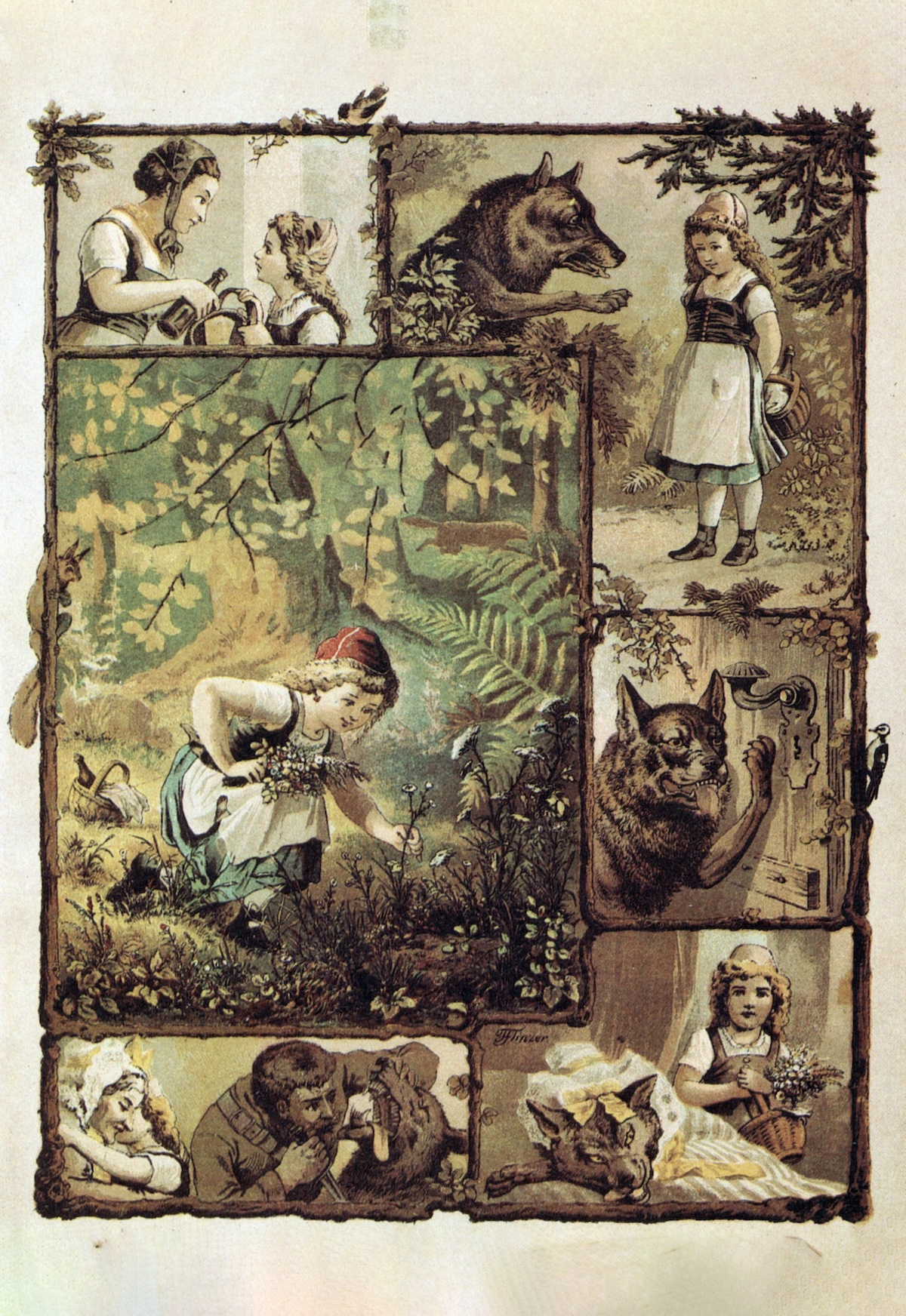‘The Brothers Grimm: A Biography’ by Ann Schmiesing review
The Brothers Grimm: A Biography by Ann Schmiesing brings folklore’s most famous double act out of the shadowy realm of legend.

The Brothers Grimm, alongside the likes of the Wright brothers and the Marx brothers, are among the most recognisable sibling double-acts in history – but, as Ann Schmiesing notes in her new biography of the great German folklorists, few people are now able to name the brothers individually, or identify each’s achievements. Jacob and Wilhelm Grimm have fallen victim to a kind of ‘genericide’: the universal fame of their work has killed their actual biographies (even if linguists still remember Jacob for Grimm’s Law). It is a problem intensified, for the Brothers Grimm, by the archetypal status their stories now occupy in the popular imagination. No one credits the Grimms as the authors of ‘Little Red Riding Hood’ or ‘Hansel and Gretel’ in the way Shakespeare is lauded for his genius as a creator; the Grimms, in popular culture, were mere conduits for primordial tale-types. Yet there is no such thing as pristine folklore, or pure story; every telling comes from, and owes something to, the teller. Folklore, or the telling of it, is located in history; and Ann Schmiesing’s The Brothers Grimm does a fine job of furnishing Jacob and Wilhelm Grimm with a history.
The Grimms themselves, as Schmiesing notes, were very much aware that ‘editing is always a form of mediation’; they were always philologists as much as storytellers. Indeed, they saw themselves as scientists, not storytellers. Their story is the story of the genesis of folklore as a discipline – for although the term folk-lore was not coined until 1846, its inventor William Thoms explicitly cited the work of the Grimms when he did so. Today’s folklorists may not carry Jacob and Wilhelm’s certainty that folklore is truly a science, but it is also difficult to imagine the modern discipline existing without them. The Grimms’ work was guided (in the broadest sense) by their philological preoccupations. They were interested in language, specifically the German language.
Schmiesing begins by documenting the impact of their father’s early death, aged 44 in 1796, on the Grimms, which imbued them with a strong work ethic arising from an awareness of the shortness of life. The brothers’ early adulthood, and their studies of philology, led them to begin asking how the past can be reconstructed without distortion, and inspired a strong interest in what it meant to be Hessian and German. Apprenticeship to scholars followed, such as Friedrich Carl von Savigny, whom Jacob served as a research assistant. Schmiesing singles out Wilhelm’s journey to Halle in 1809, seeking medical help for a heart problem, as a turning point for the brothers; in Halle, Wilhelm worked on Old Danish Heroic Songs, translating rather than adapting or modifying the songs. Here was genuine scholarly commitment to folk culture as a thing of value in its own right, rather than simply using it as inspiration for independent literary projects, or embellishing and ‘improving’ it.
Between 1810 and 1812 Jacob and Wilhelm embarked on the project of collecting tales that would define their legacy. The first volume of Children’s and Household Tales was published in 1812, and Schmiesing steers a middle course in her assessment of the book. While many in the 19th century received it as a kind of cultural archaeology which excavated Europe’s distant past through patterns of story – and some 20th-century Jungian interpreters of fairytales received them as archetypal narratives that mapped the human psyche – Schmiesing resists such excessive claims to antiquity and universality. She also steers clear of the extreme scepticism of those who are inclined to regard the tales as literary productions designed to advance an idealised conception of German folklore. The tales were, in reality, a complex mix of universal and particular. While many of the tales the Grimms collected for the first volume of Children’s and Household Tales, from ‘Cinderella’ to ‘Rumpelstiltskin’, belong to widely diffused types, the Grimms’ collection also offers a window to the oral culture of Napoleonic-era Hesse. The book’s record of folk culture in a particular time and place is now easily forgotten. And the stereotype of the tales as gathered from poor old women needs to be set aside; we now know some of the tales were told by young people, who were not always poor or marginalised.
The Grimms were engaged with folk and high culture, and were in direct dialogue with intellectual giants of the time such as Goethe and Schlegel. They helped to inaugurate a belief in the ‘soul’ of a people that might appear to us naive or dangerous – but they were also engaged quite literally in the process of nation-building. Jacob acted as a diplomat at the Congress of Vienna in 1814. The Grimms’ ‘nationalistic’ focus on the recovery of a German national character in the face of Napoleonic interference in the German states has provoked accusations that they laid the foundations of a German nationalism that eventually spawned Hitler. But, as Schmiesing points out, the Grimms’ conception of Germanness was never about race, blood, or even soil; it was entirely linguistic, and they were at most ‘proto-nationalist’ rather than nationalist figures.
Jacob hoped his long-term reputation would rest on his German dictionary rather than the tales, but few remember the dictionary now. And Children’s and Household Tales were never meant as tales for children – they were, rather, intended as a record of traditional tales largely told to children. But the Grimms accidentally and unintentionally invented a literary form (at least in the German-speaking world): children’s literature. Children would become the primary consumers of ‘Grimms’ fairytales’ – even if, as anyone who has read them knows, the tales are not always child-friendly in the modern sense. Ann Schmiesing’s The Brothers Grimm lifts Jacob and Wilhelm out of the shadowy realm of legend into which they themselves have sometimes slipped, and restores them as real human beings who lived in a particular time and place – even if they gifted to the world tales that are timeless.
-
The Brothers Grimm: A Biography
Ann Schmiesing
Yale University Press, 360pp, £25
Buy from bookshop.org (affiliate link)
Francis Young’s most recent book is Twilight of the Godlings: The Shadowy Beginnings of Britain’s Supernatural Beings (Cambridge University Press, 2023).






